-
NRC: Not all equipment failures at U.S. nuclear plants are reported
Companies that operate U.S. nuclear power plants are not reporting some equipment defects that could create safety risks, according to a new report; the Nuclear Regulatory Commission’s (NRC) inspectors found at least twenty-four instances where possible equipment defects were identified but not reported to the agency from December 2009 through September 2010; the NRC inspector general also raised questions in the report about the agency’s oversight, saying reporting guidelines for the nuclear industry are “contradictory and unclear”; unless the NRC takes steps to improve its reporting guidelines, “the margin of safety for operating reactors could be reduced” the report said
-
-
Nuclear countries glean lessons from Japan's disaster
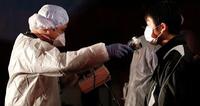
Japan’s effort to contain the escalating nuclear disaster reveals a series of missteps, bad luck, and desperate improvisation; what also emerges is a country that has begun to question some of its oldest values: Japanese have long revered the country’s bureaucratic competence, especially when it is contrasted with its political dysfunction; Japan has also proudly often chosen to go its own way and turn down outside assistance; other countries relying on nuclear power generation are trying to see whether the Japanese disaster holds lessons for them
-
-
Indian Point 50-mile evacuation plan unrealistic
Located only thirty-five miles north of New York City, the most populous area in the United States, is the Indian Point nuclear reactor; safety officials are questioning the wisdom of operating a plant so close to New York City; a fifty mile evacuation radius around the plant would affect nearly twenty million people and some say evacuating that many people on short notice is a “fantasy”; NRC is currently conducting a thorough safety review of U.S. nuclear plants and the Indian Point reactor is one of seventeen under scrutiny; New York Governor Andrew Cuomo recently called for the plant to be shut down
-
-
U.S. reconsiders nuclear plant sites amid safety review
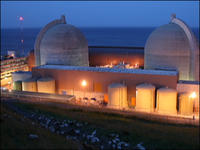
Following the nuclear crisis that occurred in Japan as a result of a massive earthquake and tsunami, the United States is undergoing a thorough safety review of existing plants that may affect where new plants are located; President Obama ordered the Nuclear Regulatory Commission (NRC) to conduct a comprehensive safety review of all nuclear plants in the United States; observers are particularly concerned with the Indian Point nuclear power station located forty miles north of New York City; if an accident were to occur, up to twenty million people, including eight million in New York City, would have to be evacuated
-
-
New reactor design lessens risks
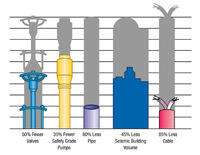
One of the major vulnerabilities of the four Japanese reactors which failed as a result of the combined force of the earthquake and tsunami, was that they relied on active cooling systems that require electricity; if there is a power outage, and if diesel back-up generators stop working, water stops flowing into the reactor pool to keep the uranium rods cool; newer reactor design relies on a passive cooling system: water is suspended over the reactor housing, and if pressure within the system drops, this allows the water to fall into the reactor area, submerging it in enough water to keep it cool
-
-
Germany ends nuclear program
Last Thursday German chancellor Angela Merkel declared that her government plans to close its nuclear power plants in a “measured exit”; the decision to end Germany’s nuclear power program was a result of the continuing nuclear crisis in Japan; some believe that Chancellor Merkel’s announcement is driven more by politics than safety concerns; recent polls show that 80 percent of voters are opposed to nuclear power; Merkel’s party faces close regional elections in states where nuclear plants are located; Switzerland, Venezuela, and China have also announced that they will suspend or delay plans to build new nuclear plants
-
-
U.S. nuclear program under greater scrutiny
The ongoing nuclear crisis in Japan has caused countries around the world to reconsider its nuclear plans; Germany recently announced that it was ending its nuclear program, while Sweden, Venezuela, and China have all announced that they were temporarily suspending their nuclear programs to conduct safety reviews; lawmakers and engineers in the United States are also pushing for greater scrutiny of nuclear power plants; in its latest report the Union of Concerned Scientists sharply criticized the U.S. Nuclear Regulatory Commission (NRC) for not properly enforcing safety regulations at nuclear power plants;
-
-
Nuclear crisis worsening; growing radiation leaks at reactors nos. 3, 4
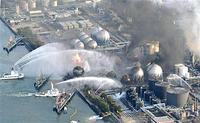
The situation at the Fukushima Daiichi nuclear power plant appears increasingly dire, as efforts to cool overheating reactors have failed; Japanese military fire trucks are now spraying water at the plant’s no. 3 reactor; earlier efforts on Thursday to use helicopters to dump water on the rods have failed; the U.S. Nuclear Regulatory Commission chairman is particularly concerned about reactor no. 4 which houses spent fuel rods; spent fuel rods, placed in cooling tanks, are rapidly overheating as they are boiling away the water they are submerged in; the secondary containment unit at reactor no. 4 has been breached and radiation is now freely leaking out of the plant; high radiation levels are hindering efforts to repair the reactors
-
-
Cable connected to reactor no. 2, coolant pumps to be restarted
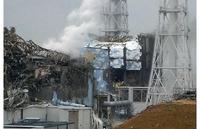
Tepco, the operator of the stricken reactors, says — and the IAEA confirms — that its engineers have been able to reconnect a power line to reactor no. 2; the 1-km cable connects to the main power grid; restoring power should enable engineers to restart the pumps which send coolant over the reactor and into the pools where radioactive waste is stored; Tepco said the process of reconnecting power could take up to fifteen hours; senior IAEA official Andrew Graham said the situation at Fukushima had not deteriorated, but could yet do so. He described the situation at “reasonably stable”; the head of the IAEA, Yukiya Amano, is heading to Tokyo to be briefed by Japanese officials
-
-
Japan worst-case scenario unlikely to cause catastrophic radiation release: expert
Two U.S. nuclear experts — both professors in the No. 1-ranked University of Michigan Department of Nuclear Engineering and Radiological Sciences — say that while exposed spent fuel rods at the failing nuclear reactors in Japan pose new threats, the worst-case scenario would still be unlikely to expose the public to catastrophic amounts of radiation; “The worst thing that could happen now is the fuel rods could be exposed to the air and that could be, then, down to our last barrier,” says one of the experts; “We could not have a recriticality, or a nuclear explosion. It’s physically impossible in this kind of system”
-
-
Japan's nuclear crisis increasingly dire
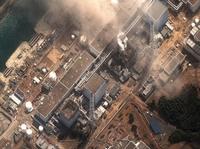
Japan’s ongoing nuclear saga took a decided turn for the worse on Tuesday when a third explosion at a nuclear reactor may have cracked the containment unit protecting it, causing large amounts of radiation to leak out; the government requested assistance from the IAEA on Tuesday and teams were dispatched to help monitor radiation and human health; citizens within a thirteen mile radius of the Fukushima Daiichi power plant were evacuated and 140,000 residents within a twenty mile radius have been advised to stay indoors; officials also established a twenty mile no-fly zone around the power plant; officials in Tokyo reported that radiation levels were ten times their normal levels; experts say that these increased exposure levels do not pose an immediate threat to people, but the long-term effect remains unknown; the Tokyo Electric Power Company is considering using helicopters to pour cold water on top of overheating rooftops covering spent fuel rods; a small crew of fifty technicians at the badly damaged power plant is bravely fighting through high radiation levels and fires to contain the three reactors
-
-
EU considering subjecting nuclear plants to stress tests
The EU is considering subjecting the 150 nuclear reactors operating in Europe to stress test to check their safety in light of Japan’s nuclear crisis; the EU’s executive arm has no power to send experts to nuclear plants to see whether they are safe, but can discuss stress tests to see if EU nations would authorize them
-
-
Californians anxious about safety of nuclear reactors

The parallels between Japan and California are sobering: As in Japan, California’s two plants — Diablo Canyon near San Luis Obispo and San Onofre in Southern California — sit in active earthquake zones; like Japan’s, both rest beside the ocean and were built more than a quarter-century ago; perhaps most troubling, the San Onofre plant straddles two counties in Southern California with a combined population of 6 million people
-
-
The problem nuclear power generation faces: wary investors
The Japanese disaster, in which four nuclear reactors were damaged, is important for the future of nuclear power generation not because it demonstrated the inherent risks of nuclear power (so far there are no reported death attributed to the damaged reactors); rather, the problem of nuclear power is the reluctance of investors to invest in it; experts say it was clear that the situation in Japan would further erode enthusiasm and may even affect applications for continued use of existing plants
-
-
Official: U.S. safe from Japanese radiation
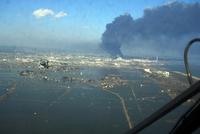
U.S nuclear officials said that there was very little chance that harmful levels of radiation from Japan’s nuclear reactors would reach Hawaii or the west coast of the United States; the head of the Nuclear Regulatory Commission (NRC) also said nuclear plants in the United States were designed to withstand natural disasters like earthquakes and tsunamis; readings from radiation sensors placed on the west coast have not detected any increases in radiation levels and experts do not expect any increases; Japanese utilities have flooded two nuclear reactors with sea water in a desperate attempt to cool them down and prevent a meltdown; the NRC has dispatched two nuclear experts to Japan to assist with efforts to keep three damaged reactors from melting down
-
- All
- Regional
- Water
- Biometrics
- Borders/Immig
- Business
- Cybersecurity
- Detection
- Disasters
- Government
- Infrastructure
- International
- Public health
- Public Safety
- Communication interoperabillity
- Emergency services
- Emergency medical services
- Fire
- First response
- IEDs
- Law Enforcement
- Law Enforcement Technology
- Military technology
- Nonlethal weapons
- Nuclear weapons
- Personal protection equipment
- Police
- Notification /alert systems
- Situational awareness
- Weapons systems
- Sci-Tech
- Sector Reports
- Surveillance
- Transportation
Advertising & Marketing: advertise@newswirepubs.com
Editorial: editor@newswirepubs.com
General: info@newswirepubs.com
2010-2011 © News Wire Publications, LLC News Wire Publications, LLC
220 Old Country Road | Suite 200 | Mineola | New York | 11501
Permissions and Policies
Editorial: editor@newswirepubs.com
General: info@newswirepubs.com
2010-2011 © News Wire Publications, LLC News Wire Publications, LLC
220 Old Country Road | Suite 200 | Mineola | New York | 11501
Permissions and Policies
